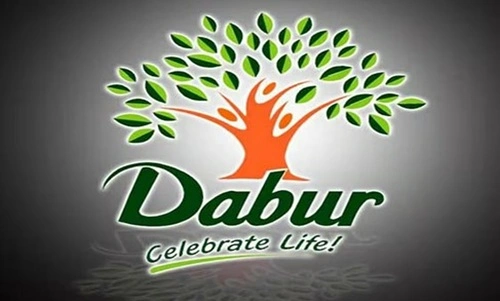Dabur, a century-old stalwart of Indian consumer goods, continues to shine in the Ayurveda-powered FMCG world. Despite recent macroeconomic headwinds, its Q4FY25 performance showed resilience—revenues grew modestly, and market share strengthened in key segments. As a content creator in India and a SWOT analyst at heart, I see a brand blending tradition with innovation, charting a roadmap for future growth rooted in its heritage.

Strengths
1. Deeply Trusted Ayurvedic Heritage
Founded in 1884, Dabur’s legacy anchors its identity. Products like Chyawanprash, Amla Hair Oil, and Real juices evoke trust and nostalgia, giving the brand an edge especially in health-conscious households .
2. Diverse, Power-Brand Portfolio
With over 250 products across personal care, healthcare, and foods, Dabur ensures no single category hogs its identity. Its “Power Brands”—from Chyawanprash to Vatika—account for roughly 70% of sales, showcasing concentrated brand strength.
3. Robust Distribution
Covering 6–6.7 million retail outlets and reaching 90–122 thousand villages, Dabur’s rural grip is unmatched. Rural demand growth often outpaces urban, reinforcing its reach and consumer loyalty.
4. Innovation & R&D Excellence
With several R&D centres and over 100 scientists, Dabur blends Ayurveda with science. Recent launches—like ready-to-use juices, baby care lines, and herbal cosmetics—reflect its commitment to modern wellness solutions.
5. Sustainability Leadership
Ambitious sustainability goals—plastic neutrality by 2025, net-zero carbon by 2045, water positivity by 2030—showcase its ESG orientation. These initiatives strengthen brand perception among eco-conscious consumers.
Weaknesses
1. Urban Premium Engagement Gap
While well-loved in rural and value-driven segments, Dabur hasn’t fully resonated with premium urban audiences. Its traditional image has yet to catch fire among aspirational millennials.
2. Overreliance on Key Categories
Core products like Chyawanprash and Amla oil drive a sizable share of revenue. Any dip in these lines—especially with changing consumer habits—could dent overall performance.
3. Domestic Market Dependence
With 90+% of revenue from India, Dabur carries significant geographic concentration risk. Global expansion remains modest compared to its domestic dominance.
4. Sensitive to Raw Material Fluctuations
Their core herbal raw materials—turmeric, ginger, honey—face volatile pricing. Rising input costs weigh on margins unless absorbed or passed to consumers.
5. Product Quality Risks
Adulteration allegations—such as diluted honey or misleading juice claims—have tarnished some consumer trust and attracted regulatory scrutiny.
Opportunities
1. Rural Market Velocity
With rural boosted by smartphone access and rising incomes, Dabur can tailor small‑pack, affordable healthcare and beauty products to deepen its reach .
2. Premium & D2C Expansion
Targeting urban premium users with clean-label skincare, wellness supplements, or personalized solutions can help reclaim lost ground. A stronger D2C presence also accelerates direct engagement.
3. International Growth
Dabur’s footprint spans 100–120 countries, but revenue share globally remains in the low teens. Scaling in MENA, Africa, Southeast Asia, and Western markets can balance domestic exposure.
4. Health & Wellness Trends
Rising health consciousness is a tailwind for Ayurvedic solutions. Dabur can capture this by expanding in immunity, functional foods, organic personal care, and wellness beverages.
5. E‑commerce Acceleration
A stronger omnichannel strategy—blending offline strength with online scaling—will help Dabur meet modern consumer demands, especially in urban centres .
Threats
1. Intensifying Competition
Emerging D2C brands (nature-based skincare, wellness startups) and big FMCG players (HUL, P&G, ITC) threaten Dabur’s traditional turf. Agility matters now .
2. Regulatory Scrutiny
Regulators are challenging health claims—like “100% juice”—and scrutinizing herbal claims, which may pressure marketing and labeling strategies .
3. Rising Input Costs
Volatile commodity prices can compress margins. Dabur must either improve operational efficiency or marginally raise product prices, risking consumer pushback.
4. Economic Slowdown
Urban demand softness—partly seen in Q4FY25—alongside rural impact due to inflation, could weigh on discretionary products.
5. Brand Reputation Risks
Customer outrage—like trust issues with honey adulteration—and ongoing court scrutiny can hurt image unless addressed proactively .
Strategic Conclusion
Dabur stands at a crossroads—anchored in admirable Ayurvedic heritage yet challenged to keep pace with fast-changing consumer landscapes. Its Q4FY25 performance, though slightly muted (8% PAT drop), highlights resilience: market share gains across 90% of product lines.
To stay ahead, here’s a roadmap:
- Premiumize & Digitize: Launch high-end lines with modern aesthetics; strengthen D2C and e‑commerce credentials.
- Global Scale-up: Push further into international markets with region‑specific strategies.
- Quality & Trust: Double down on transparency—certify honey purity, clarify juice content, and aggressively communicate these to rebuild trust.
- Value-expressive Innovation: Expand product suites into clean skincare, wellness tech, and immunity-boosting kits.
- Cost-Plus Certification: Ensure raw materials are sustainably sourced and traceable, adding to credibility.
Final Thought
Dabur’s story exemplifies the endurance of brands blending tradition with progress. As a content creator, I’m inspired by how Dabur crafts emotionally resonant narratives—family health, Ayurvedic wisdom, environmental responsibility—while eyeing modern frontiers. If Dabur can tighten its quality control, spruce its urban image, and accelerate global and digital thrusts, it’ll remain a compelling FMCG champion in India—and resonate globally with consumers seeking heritage-grounded, natural living.

Meet Suhas Harshe, a financial advisor committed to assisting people and businesses in confidently understanding and managing the complexities of the financial world. Suhas has shared his knowledge on various topics like business, investment strategies, optimizing taxes, and promoting financial well-being through articles in InvestmentDose.com


